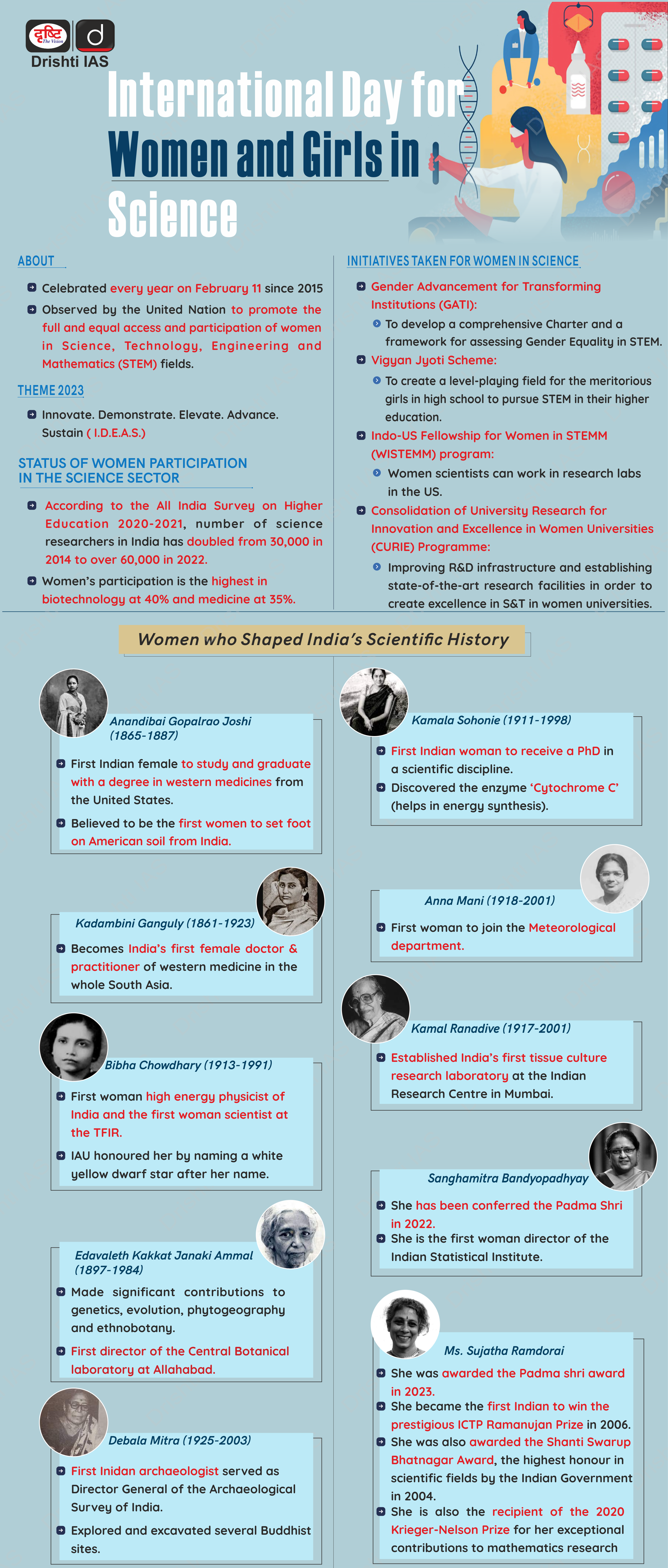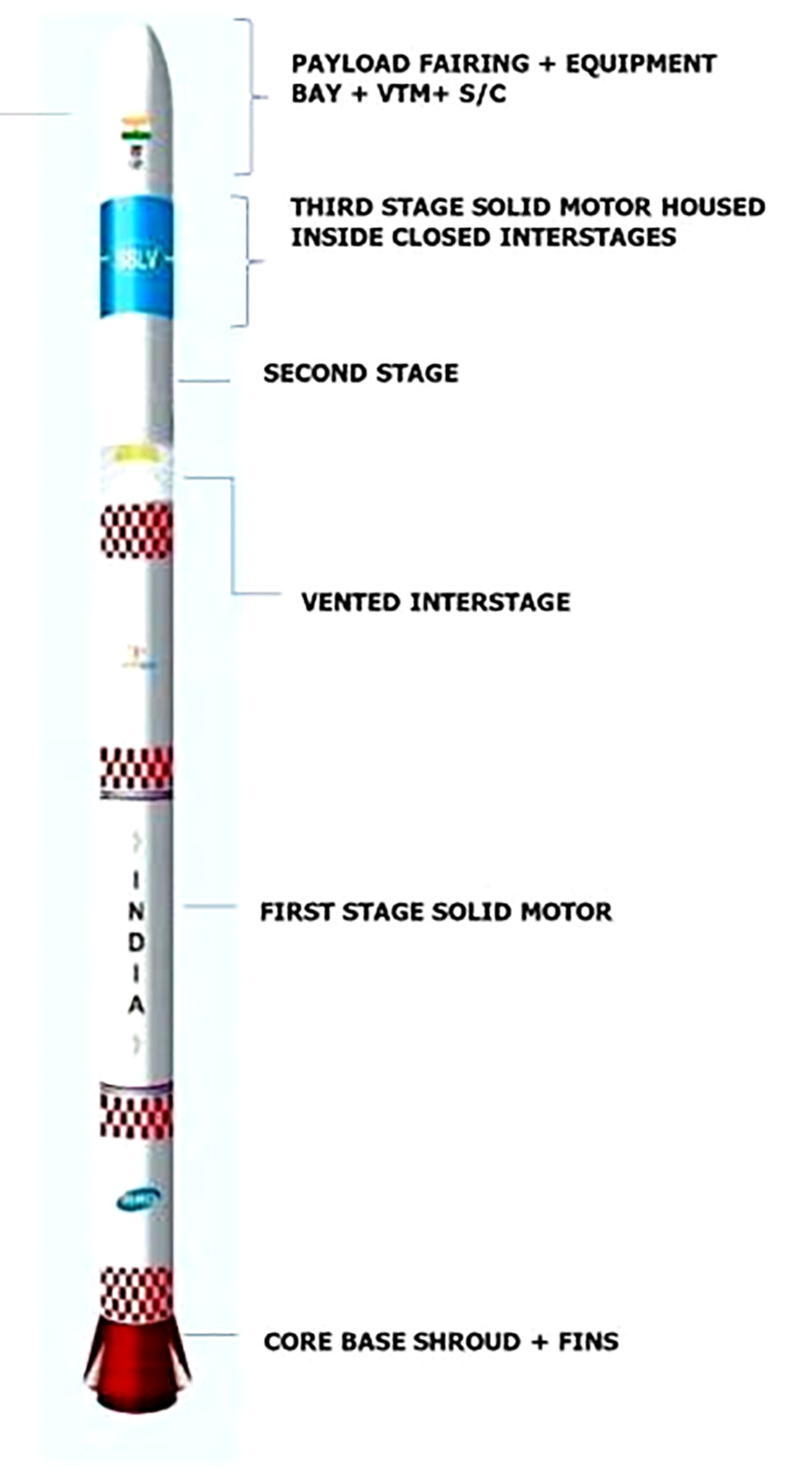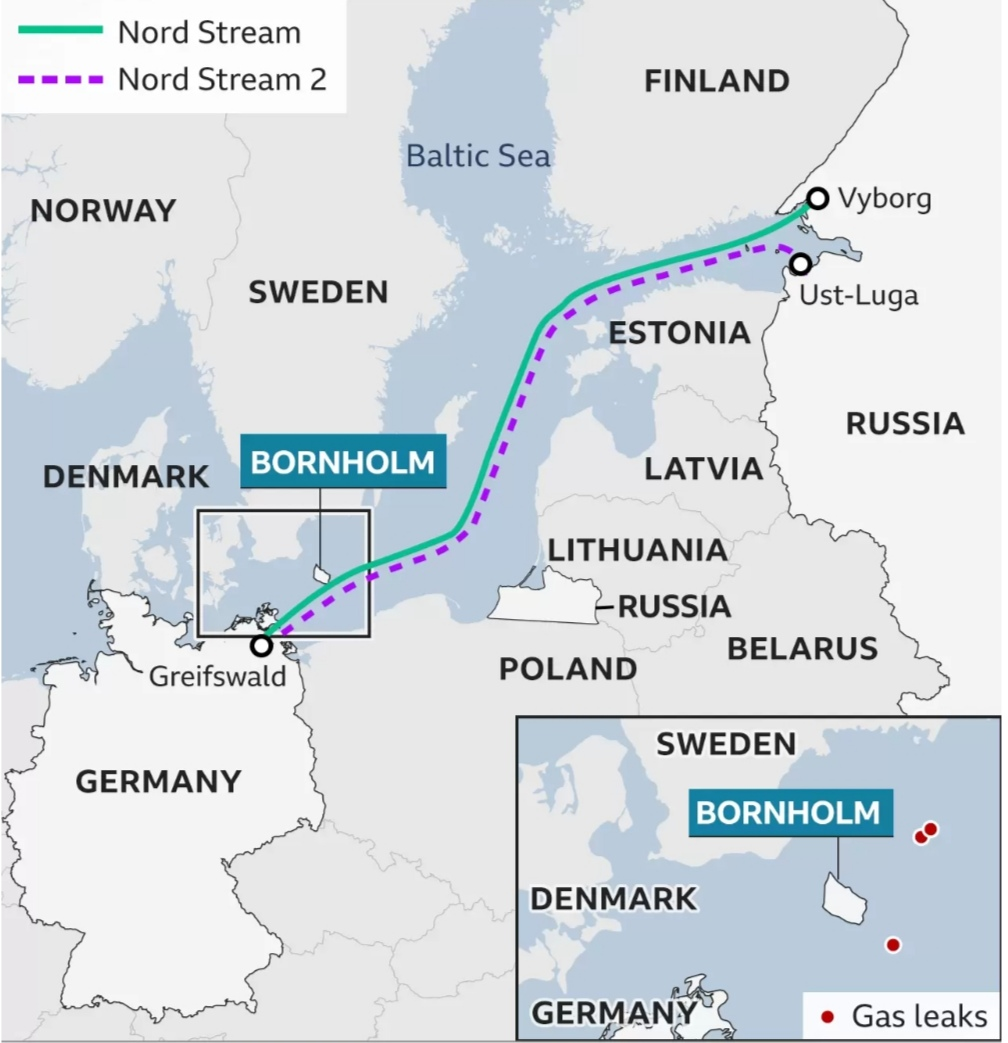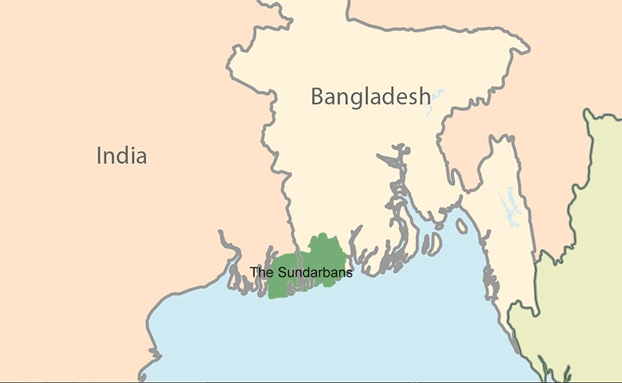Infographics
Geography
GSI Discovers Lithium Resources in J&K
Prelims: Geological Survey of India, Lithium reserves and its importance
Mains: Mineral & Energy Resources
Why in News?
The Geological Survey of India has for the first-time established Lithium ‘inferred’ resources(G3) of 5.9 million tonnes in Salal-Haimana area of the UT of Jammu & Kashmir.
What are Inferred Resources?
- The “inferred” mineral resource is a resource for which quantity, grade and mineral content are estimated only with a low level of confidence.
- It is based on information gathered from locations such as outcrops, trenches, pits, workings and drill holes that may be of limited or uncertain quality, and also of lower reliability from geological evidence.
- It is based on the classification from United Nations International Framework Classification for Reserves/Resources – Solid Fuels and Mineral Commodities of 1997 (UNFC-1997).
What is UNFC-1997?
- UNFC-1997 is a system for the classification and reporting of reserves and resources of solid fuels and mineral commodities and provides a standardized, internationally recognized system for the reporting of reserves and resources.
- It has been developed by the UN Economic Commission for Europe.
- It promotes transparency and consistency in the reporting of mineral and energy assets and ensures that geological, engineering, and economic information is used consistently.
- It provides a basis for comparing reserves and resources data between countries and regions which is widely used by governments, industry, and financial institutions around the world.
- According to UNFC-1997, there are four stages of exploration for any mineral deposit:
- Reconnaissance (G4)
- Preliminary exploration (G3)
- General Exploration (G2)
- Detailed Exploration (G1)
What is Lithium?
- About:
- Lithium (Li), sometimes also referred as ‘White gold’ due to its high demand for rechargeable batteries, is a soft and silvery-white metal.
- Extraction:
- Lithium can be extracted in different ways, depending on the type of the deposit — generally either through solar evaporation of large brine pools, or from hard-rock extraction of the ore.
- Uses:
- Lithium is an important component of electrochemical cells used in batteries of EVs, Laptops, Mobiles etc.
- It is also used in thermonuclear reactions.
- It is used to make alloys with aluminium and magnesium, improving their strength and making them lighter.
- Magnesium-lithium alloy - for armour plating.
- Aluminum-lithium alloys - in aircraft, bicycle frames and high-speed trains.
- Major Global Lithium Reserves:
- Chile > Australia > Argentina are top countries with Li reserves.
- Lithium Triangle: Chile, Argentina, Bolivia.
- Lithium Reserves in India:
- Preliminary survey showed estimated lithium reserves of 14,100 tonnes in a small patch of land surveyed in Southern Karnataka’s Mandya district.
- Other potential sites:
- Mica belts in Rajasthan, Bihar, Andhra Pradesh.
- Pegmatite belts in Odisha and Chhattisgarh.
- Rann of Kutch in Gujrat.
How India Currently Fulfills its Lithium Demand?
- India is currently dependent on imports for lithium cells and batteries. Over 165 crore lithium batteries are estimated to have been imported into India between FY17 and FY20 at an estimated import bill of upwards of $3.3 billion.
- The country's efforts to secure lithium sourcing agreements are seen as a move against imports from China, which is the major source of both raw materials and cells.
- India is perceived as a late entrant into the lithium value chain, entering at a time when the EV sector is expected to undergo significant disruption.
- 2023 is considered a turning point for battery technology, with the potential for several improvements to the Li-ion technology.
What is the Significance of Discovery?
- Assistance in Achieving Targets:
- India has pledged to reduce its emissions towards net zero by 2070, which requires the availability of lithium as a critical component in electric vehicle (EV) batteries.
- The Central Electricity Authority of India has estimated that the country will need 27 GW of grid-scale battery energy storage systems by 2030, which will require massive amounts of lithium.
- Addressing Global Shortages:
- The World Economic Forum (WEF) has warned of global lithium shortages due to rising demand for EVs and rechargeable batteries, which is estimated to reach 2 billion by 2050.
- The world's supply of lithium is under strain due to the concentration of resources in a few locations with 54% of the world's Lithium reserves are found in Argentina, Bolivia and Chile.
- The International Energy Agency (IEA) predicts that the world could face lithium shortages by 2025.
What is Geological Survey of India?
- Presently, GSI is an attached office to the Ministry of Mines. It was set up in 1851 primarily to find coal deposits for the Railways.
- Over the years, it has grown into a repository of geo-science information and also has attained the status of a geo-scientific organization of international repute.
- It is headquartered in Kolkata and has six regional offices located at Lucknow, Jaipur, Nagpur, Hyderabad, Shillong and Kolkata. Every state has a state unit.
- Central Geological Programming Board (CGPB) is an important platform of the Geological Survey of India (GSI) to facilitate discussion for synergy and to avoid duplication of work.
UPSC Civil Services Examination, Previous Year Question (PYQ)
Q. Which one of the following pairs of metals constitutes the lightest metal and the heaviest metal, respectively? (2008)
(a) Lithium and mercury
(b) Lithium and osmium
(c) Aluminium and osmium
(d) Aluminium and mercury
Ans: (b)
Exp:
- Light metals are metals of low atomic weight while heavier elements generally have high atomic weight.
- Osmium is a hard metallic element which has the greatest density of all known elements. Osmium has an atomic weight of 190.2 u and its atomic number is 76.
- Lithium having an atomic number 3 and atomic weight of 6.941u is the lightest known metal.
- Therefore, option (b) is the correct answer.

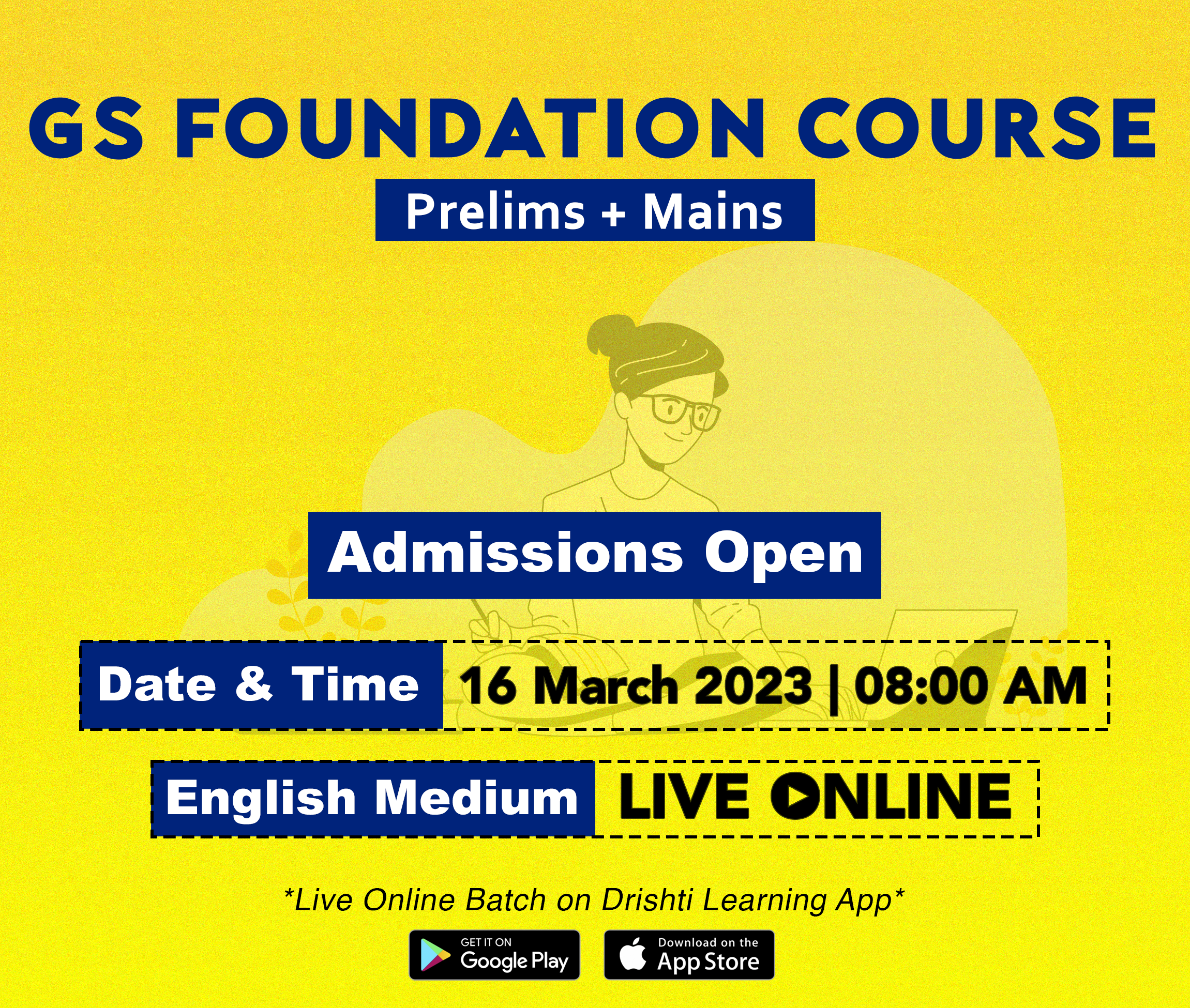
Governance
Crony Capitalism
For Prelims: Crony Capitalism, Parliamentary Committee, Chief Justice of India (CJI), Gross Domestic Product (GDP), Anti-corruption laws, Corporate Social Responsibility,
For Mains: Issues Associated with Crony Capitalism, Ways to Address Crony Capitalism.
Why in News?
Parliament witnessed sharp exchanges over the Adani-Hindenburg issue and the opposition is accusing it of crony capitalism and raising demands for a probe by a Joint Parliamentary Committee or a Chief Justice of India (CJI)-designated committee.
What is Crony Capitalism?
- About:
- Crony capitalism is a term used to describe a capitalist economic system in which individuals or businesses with close ties to political leaders and government officials use their political connections to gain an unfair advantage in the marketplace.
- In the Crony Capitalism Index 2021 published by The Economist; India was ranked at 7th position where crony sector wealth accounted for 8% of Gross Domestic Product (GDP) of the country.
- Issues Associated with Crony Capitalism:
- Unfair Advantage in Marketplace: Crony capitalism can lead to corruption as businesses use their political connections to gain an unfair advantage in the marketplace, often by bribing government officials.
- This can undermine the rule of law and erode public trust in government institutions.
- Distorted Market Competition: When some businesses are given an unfair advantage through their political connections, it distorts market competition and makes it difficult for smaller businesses and entrepreneurs to succeed.
- This can lead to a concentration of wealth and power in the hands of a few individuals or corporations.
- Reduced Innovation: The dominant position of large businesses often erodes competition and discourages them to further innovate or improvise their products/services.
- This can stifle innovation in the overall economy and lead to a decline in competitiveness.
- Public Distrust of Government and the Economy: Widespread crony capitalism can lead to a loss of public trust in government institutions and the economic system.
- This can make it difficult for policymakers to implement reforms and for businesses to operate effectively.
- Unfair Advantage in Marketplace: Crony capitalism can lead to corruption as businesses use their political connections to gain an unfair advantage in the marketplace, often by bribing government officials.
How can India Address the Issues Related to Crony Capitalism?
- Improving Transparency and Accountability: India can improve transparency and accountability in its political and economic systems by implementing measures such as open data initiatives, increasing the independence of regulatory agencies, and improving the transparency of government contracts and subsidies.
- Encouraging Competition: India can encourage competition by reducing barriers to entry for smaller businesses and entrepreneurs, such as reducing red tape and streamlining regulations.
- This can make it easier for new entrants to compete with established businesses and reduce the concentration of wealth and power in the hands of a few individuals or corporations.
- Towards Corporate Ethical Responsibility: India can promote responsible business practices by implementing measures to ensure that businesses act ethically and sustainably, in lines of corporate social responsibility and sustainability initiatives.
- This can increase public trust in the economic system and encourage businesses to act in the best interests of society as a whole.
- Encouraging Responsible Political Behaviour: India can encourage responsible political behaviour by increasing the transparency of political donations and lobbying activities.
- This can reduce the potential for corruption and ensure that elected officials are held accountable for their actions.

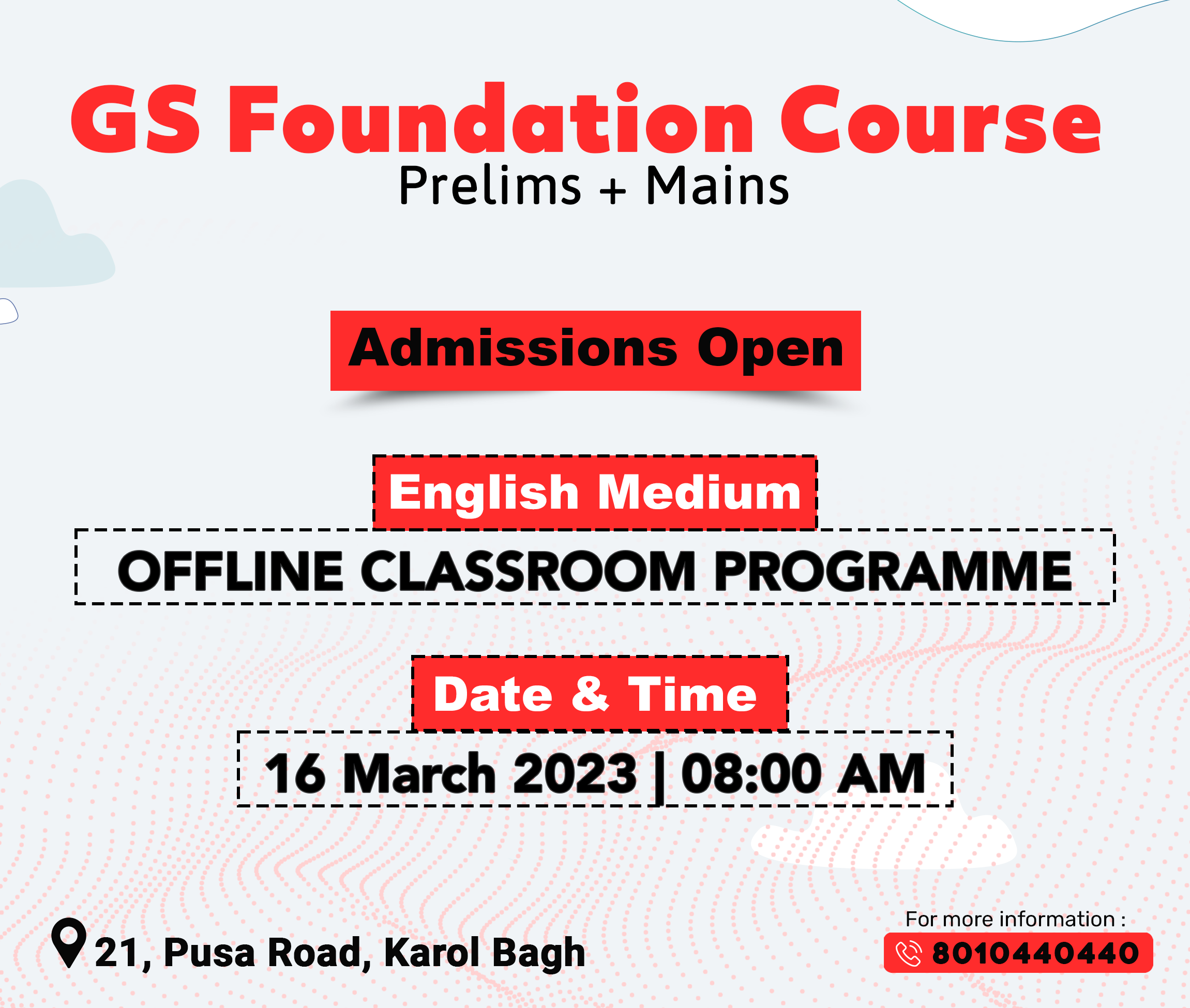
Geography
Glacial Lake Outburst Flood
Prelims: Flood, Himalayas, NDMA, Early Warning System.
Mains: Glacial Lake Outburst Flood.
Why in News?
Recently, a new study has been published on Glacial Lake Outburst Flood (GLOF), which threatens millions of people globally.
- It is the first global attempt to map potential hotspots for such floods. The study assessed the conditions of glacial lakes and the number of people living downstream from them, which has also increased significantly.
What are the Key Highlights of the Report?
- Vulnerability:
- Up to 15 million people face the risk of catastrophic flooding from glacial lakes which could burst their natural dams at any moment.
- Those facing the greatest threat live in mountainous countries in Asia and South America.
- The majority of the globally exposed population - 9.3 million (62%) are located in the region of high mountain Asia (HMA).
- In Asia, around one million people live within just 10 km of a glacial lake.
- People living in India, Pakistan, Peru and China account for over half of those at risk (globally).
- Most Dangerous Basins:
- The most dangerous of Glacial basins are found in Pakistan (Khyber Pakhtunkhwa basin), Peru (Santa basin) and Bolivia (Beni basin) containing 1.2 million, 0.9 million and 0.1 million people respectively who could be exposed to GLOF impacts.
- Glaciers across the Andes (S America) have undergone rapid deglaciation over the last 20 years in response to climate changes.
- Threat to India:
- In the Himalayas, 25 glacial lakes and water bodies have witnessed an increase in water spread area since 2009.
- There has been a 40% increase in water spread in India, China and Nepal, posing a huge threat to seven Indian states and Union Territories.
- Of these, six are Himalayan states / UTs: Jammu and Kashmir, Ladakh, Himachal Pradesh, Sikkim, Assam and Arunachal Pradesh.
- The rapid onset and high discharge of GLOFs means there is often insufficient time to effectively warn downstream populations and for effective action to be taken, particularly for populations located within 10-15 km of the source lake.
- Impact:
- The floods that follow come thick and fast, in many cases being powerful enough to destroy vital infrastructure.
- GLOF has the potential to catastrophically threaten people’s lives, livelihoods and regional infrastructure.
- Suggestions:
- Improvements are urgently needed in designing Early Warning Systems alongside evacuation drills and other forms of community outreach to enable more rapid warnings and emergency action in these highly exposed areas.
What is a GLOF?
- About:
- A glacial lake outburst flood (GLOF) is a type of catastrophic flood that occurs when the dam containing a glacial lake fails, releasing a large volume of water.
- This type of flood is typically caused by rapid melting of glaciers or the buildup of water in the lake due to heavy precipitation or the inflow of meltwater.
- In February 2021, Chamoli district in Uttarakhand witnessed flash floods which are suspected to have been caused by GLOFs.
- Causes:
- These floods can be triggered by a number of factors, including changes in the volume of the glacier, changes in the water level of the lake, and earthquakes.
- According to NDMA (National Disaster Management Authority), glacial retreat due to climate change occurring in most parts of the Hindu Kush Himalayas has given rise to the formation of numerous new glacial lakes, which are the major cause of GLOFs.
What are the NDMA’s Guidelines to Tackle Glacial Burst?
- Identifying Potentially Dangerous Lakes:
- Potentially dangerous lakes can be identified based on field observations, records of past events, geomorphologic and geotechnical characteristics of the lake/dam and surroundings, and other physical conditions.
- Use of Technology:
- Promoting use of Synthetic-Aperture Radar imagery (a form of radar that is used to create two-dimensional images) to automatically detect changes in water bodies, including new lake formations, during the monsoon months.
- Channeling Potential Floods:
- Reducing the volume of water with methods such as controlled breaching, pumping or siphoning out water, and making a tunnel through the moraine barrier or under an ice dam.
- Uniform Codes for Construction Activity:
- Developing a broad framework for infrastructure development, construction and excavation in vulnerable zones.
- There is a need to accept procedures for land use planning in the GLOF prone areas.
- Enhancing Early Warning Systems (EWS):
- The number of implemented and operational GLOF EWS is very small, even at the global scale.
- In the Himalayan region, there are at least three reported instances (two in Nepal and one in China) of implementation of sensor- and monitoring-based technical systems for GLOF early warning.
- Training Local Manpower:
- Apart from pressing specialised forces such as National Disaster Response Force (NDRF), ITBP and the Army, NDMA has emphasised the need for trained local manpower.
- It has been observed that over 80% of search and rescue is carried out by the local community before the intervention of the state machinery and specialised search and rescue teams.
- Comprehensive Alarm Systems:
- Besides classical alarm infrastructure consisting of acoustic alarms by sirens, modern communication technology using cell and smartphones can complement or even replace traditional alarming infrastructure.

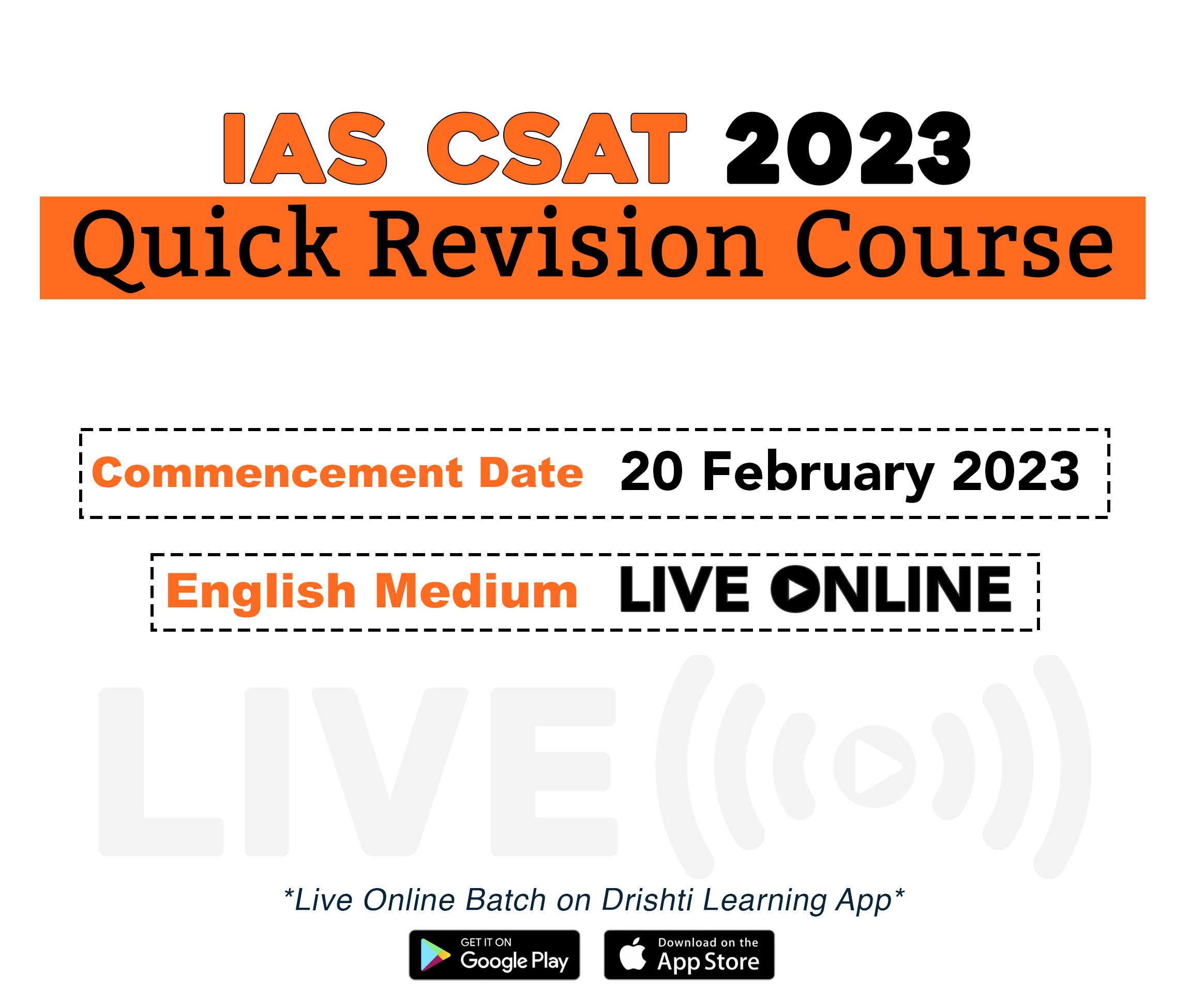
Economy
Green Energy and Jobs
Prelims: Renewable Energy, Solar Energy, Decentralized Renewable Energy.
Mains: Green Energy and Jobs.
Why in News?
According to a news study, India’s solar and wind energy sectors added 52,700 new workers, an eight-fold increase from financial year 2021-22.
- The study was jointly conducted by the Council on Energy, Environment and Water (CEEW), NRDC India (Natural Resources Defence Council India), and Skill Council for Green Jobs (SCGJ).
What are the Highlights of the Study?
- Statistics:
- Nearly 99% of the new workforce (52,100 workers) were employed in the Solar Energy Sector, with the Wind Energy sector registering very small growth (600 new workers).
- India’s solar and wind energy sectors jointly employed 1,64,000 workers as of FY’22, showing a 47% increase from FY’21. 84% of this workforce is in the solar energy sector.
- However, there has been a “huge shortage” of workers trained in upstream manufacturing segments such as making polysilicon, ingots, wafers and cells. The bulk of the current jobs are in assembling solar modules.
- This segment is the focus of the recently launched Rs. 19,500 crore (USD 2.43 billion) Production-Linked Incentive (PLI) scheme, which targets 65 GW of domestic manufacturing capacity.
- Potential:
- If these trends continue, new on-grid solar (238 GW) and wind (101 GW) capacities can potentially create about 3.4 million temporary and permanent jobs.
- Recommendations:
- The skilling programmes must catch up with the new requirements arising from sectors such as solar module and battery manufacturing and hybrid projects.
What are the Potential and Challenges of Green Energy in India?
- Potential:
- India has abundant natural resources, including solar, wind, hydro, and biomass, which can be harnessed to produce renewable energy.
- Moreover, India’s rapidly growing population and economy create a huge demand for energy, which can be met in part by using green energy sources.
- Potential Benefits:
- Reduction in Emissions: The use of green energy sources can significantly reduce the amount of greenhouse gas emissions in the atmosphere, which will help to mitigate the impacts of climate change.
- Energy Security: India is heavily dependent on imported oil and natural gas, which makes it vulnerable to price shocks and supply disruptions. Green energy sources can reduce this dependence and increase energy security.
- Rural Electrification: Many rural areas in India still lack access to electricity, which can be provided by decentralized green energy sources, such as solar panels and small-scale wind turbines.
- Employment: The green energy sector has the potential to create millions of new jobs in India, particularly in areas such as renewable energy production, energy efficiency, and grid integration.
- Challenges:
- Cost: Even though the cost of renewable energy technologies has come down in recent years, they are still more expensive than traditional energy sources such as coal and natural gas.
- Grid Integration: Integrating renewable energy sources into the existing energy grid can be challenging, particularly in terms of managing fluctuations in power generation and ensuring grid stability.
- Lack of Investment: Although there has been a recent increase in investment in the green energy sector in India, there is still a lack of investment in renewable energy projects, which limits the sector's ability to grow and create jobs.
- Skilled workforce: There is a shortage of skilled workers with the necessary training and experience to work in the green energy sector, which can limit the sector's ability to grow.
- Land Acquisition: Acquiring land for renewable energy projects can be a challenge, as it requires the cooperation and consent of local communities, who may be resistant to change.
What are the Steps Taken to Promote Green Energy?
Way Forward
- The potential for green energy in India is substantial, but the country must address the challenges to fully realize that potential.
- With the right policies, investment, and training opportunities, the green energy sector in India could play a major role in driving economic growth, reducing GHG emissions, and improving energy security.
- Collaboration of public and private sectors is essential to provide the necessary investment and training opportunities.
- The government could incentivize private sector investment by providing tax breaks, subsidies, and other benefits.
- At the same time, private sector companies could provide training and development programs to help workers acquire the skills they need to succeed in the green energy sector.
UPSC Civil Services Examination Previous Year Question (PYQ)
Q. Write a note on India’s green energy corridor to alleviate the problem of conventional energy. (2013)

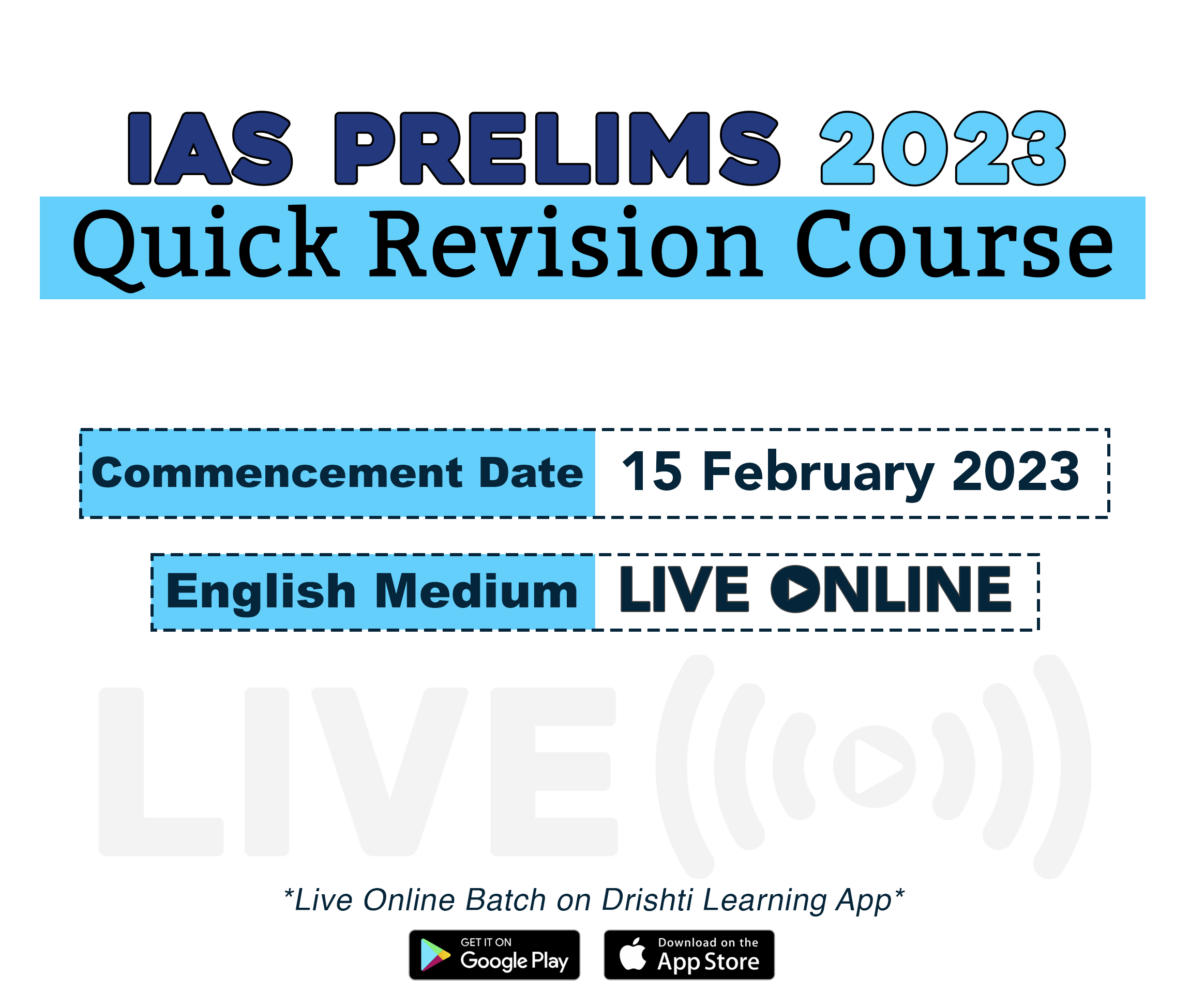
Important Facts For Prelims
ISRO’s SSLV-D2
Why in News?
In its second attempt, the Indian Space Research Organisation (ISRO)’s smallest vehicle, Small Satellite Launch Vehicle (SSLV-D2), was launched from the Satish Dhawan Space Centre, Sriharikota, Andhra Pradesh.
- The vehicle’s first development flight (SSLV D1) that took place in August 2022 failed to place the satellites in precise orbit.
- This time structural changes have been made to the equipment bay, along with changes in the separation mechanism for stage 2, and logic changes for the on-board system.
Note
- A new vehicle is declared operational by ISRO after it completes two successful development flights.
- The last vehicle to be declared operational was the GSLV Mk III, now called LVM 3, when it carried Chandrayaan-2 in 2019.
What’s Onboard in SSLV-D2?
- SSLV-D2 will place the ISRO’s earth observation satellite EOS-07 and two co-passenger satellites - Janus-1 and AzaadiSat2.
- Janus-1:
- It is a technology demonstrator satellite built by US-based Antaris and its Indian partners XDLinks and Ananth Technologies.
- It is a six-unit cube satellite with five payloads on board — two from Singapore, and one each from Kenya, Australia, and Indonesia.
- AzaadiSat2:
- It is a Cubesat weighing around 8 kg and carries 75 different payloads.
- Girl students from rural regions across the country were provided guidance to build these payloads.
- The payloads are integrated by the student team of “Space Kidz India”.
- EOS-07:
- EOS-07 is a 156.3 kg satellite designed and developed by ISRO.
- Its mission objective is to design and develop payload instruments compatible with microsatellite buses and new technologies for future operational satellites.
- Janus-1:
What is a Small Satellite Launch Vehicle?
- About:
- SSLV is a 3 stage Launch Vehicle configured with three Solid Propulsion Stages and Liquid propulsion-based Velocity Trimming Module (VTM) as a terminal.
- It is 2 m in diameter and 34m in length with a lift off weight of 120 tonnes and is capable of launching a 10 to 500 kg satellite in 500 km planar orbit.
- The rocket can be assembled by a small team in only a few days, compared to the 6 months and around 600 people it takes for ISRO’s workhorse PSLV.
- Objective:
- It has been developed to capture the emerging small (nano-micro-mini) satellite commercial market, with launches offered on demand.
- Significance:
- It provides low-cost access to Space, offers low turn-around time, facilitates flexibility in accommodating multiple satellites and demands minimal launch infrastructure.


Important Facts For Prelims
Nord Stream Pipeline
Why in News?
The recent claims made by investigative journalists regarding the bombing of the Nord Stream gas pipelines (September 2022) have ignited intense discussions and controversies.
What is the Nord Stream Pipeline?
- About:
- The Nord Stream pipeline is a natural gas pipeline that runs under the Baltic Sea, connecting Russia and Germany.
- The pipeline was built with the aim of transporting natural gas from Russia to Europe, bypassing traditional transit countries such as Ukraine.
- The first line of the Nord Stream pipeline was completed in 2011 and the second in 2012, and it has since become a major source of natural gas for Europe.
- Nord Stream 1 is a 1,224 km underwater gas pipeline running from Vyborg in northwest Russia to Lubmin in northeastern Germany via the Baltic Sea.
- Nord Stream 2, which runs from Ust-Luga in Leningrad (Russia) to Lubmin, has the capacity to handle 55 billion cubic metres of gas per year once it becomes fully operational.
- The Nord Stream pipeline is a natural gas pipeline that runs under the Baltic Sea, connecting Russia and Germany.
- Recent Issue:
- A series of underwater explosions in the Baltic Sea ruptured the Nord Stream 1 and 2 pipelines in September 2022.
- Seismologists detected the cause for the leak to be explosions under the sea in the same area.
- A series of underwater explosions in the Baltic Sea ruptured the Nord Stream 1 and 2 pipelines in September 2022.
- Significance:
- The Nord Stream pipeline has significant economic and political implications for both Europe and Russia.
- For Europe:
- The Nord Stream pipeline provides a reliable and cost-effective source of natural gas, which is a crucial energy source for many countries in the region.
- Many European businesses have large investments in Nord Stream 2 and there is pressure on governments from these businesses.
- Finally, a reduction in gas from Russia would increase already high gas prices and that would not be popular domestically.
- For Russia:
- As for Russia, which has the largest natural gas reserves in the world, around 40% of its budget comes from sales of gas and oil.
- Furthermore, the Nord Stream pipeline provides Russia with a way to increase its influence over Europe's energy markets, as it becomes a major supplier of natural gas to the region.


Rapid Fire
Rapid Fire Current Affairs
First Sundarban Bird Festival
Recently, 145 different bird species were sighted during the first Sundarban Bird Festival. The first-ever festival was organised by the Sundarban Tiger Reserve (STR) division of the West Bengal Forest Department, where several teams visited different areas inside the Sundarban Biosphere Reserve. The Bird Festival provides baseline data on Sundarbans' bird species diversity.
The Zoological Survey of India (ZSI) in 2021, had recorded 428 bird species in the Sundarbans which is one-third of all the avian species (derived from birds) found in the country.
Read More: Importance of Sundarbans, Biosphere Reserves in India, International Day for Biosphere Reserves
Mysterious Ring on a Dwarf Planet
In a new study, astronomers have found a ring around a dwarf planet, located in the Kuiper Belt at the solar system’s edge, called Quaoar. Astronomers believe the new study points to the possibility of discovering more rings around smaller planets like Quaoar in the outer solar system, which might expand our understanding of planetary ring systems.
Quaoar (named after a god of creation in Native American mythology) is roughly half the size of Pluto and orbits beyond Neptune. It also has a moon of its own, which is known as Weywot. The rings of the planet are positioned at a distance of over seven planetary radii (distance between a planet’s centre and its surface) which is much further away from other planets that possess rings.
According to the study, the ring lies far away from the Roche limit — a mathematically determined distance beyond which rings aren’t supposed to exist.
Planetary rings possess small chunks of ice and other materials that orbit a larger object. Only Saturn, Jupiter, Uranus and Neptune, including two other minor planets, Chariklo and Haumea, are known to possess rings.
Read More: Pluto
The Paalam Project
The Paalam Project or the City Livelihood Centre in Tamil Nadu’s Karur district is successfully placing educated unemployed youth in good jobs. And unlike most government employment exchanges, this one focuses mostly on private jobs.
Karur, located near the textile hub of Tirupur in western Tamil Nadu, is known for its industries, but it is more popular for its domestic textile products. The project began in 2022.
The aim of the Paalam Project was to act as a bridge between job seekers and employers.
Essentially, the Paalam Project was not to come up with an innovative idea but to utilize the many known and unknown government schemes and opportunities available.
Read More: India’s Unique Job Crisis
Exercise TARKASH
The exercise named TARKASH by the National Security Guard (NSG) and US Special Operations Forces (SOF) is currently underway in Chennai.
With chemical and biological warfare being recognised as a coming threat to the world, an ongoing Indo-US joint exercise has for the first time included a Chemical, Biological, Radiological and Nuclear (CBRN) terror response in its drill.
The objective of the joint exercise was to rapidly neutralise the terrorists, rescue the hostages safely and deactivate the chemical weapons being carried by the terrorists
CBRN weapons, which are also classified as Weapons of Mass Destruction (WMDs), have been used by States and terror elements in the past. The most recent use of CBRN in the form of a sarin gas attack was witnessed in Syria in 2017.
According to the UN, the prospect of non-state actors, including terrorists and their supporters, gaining access to and using WMDs or CBRNs is a serious threat to international peace and security.
Read More: Biological Weapon and Chemical Weapon Conventions, India-US Relations



